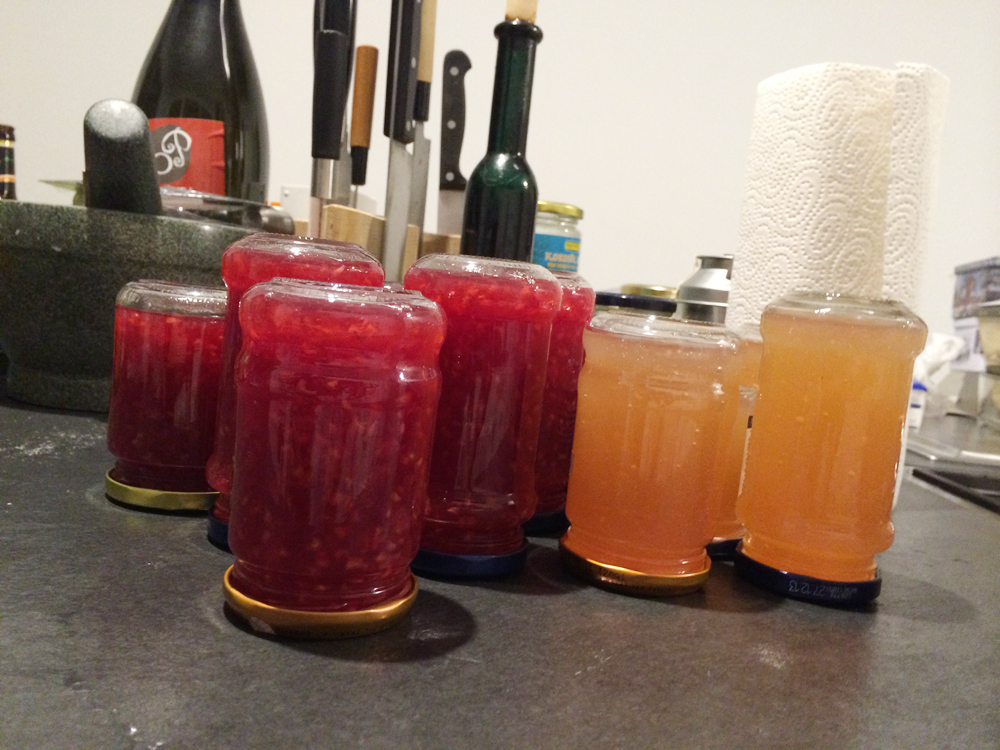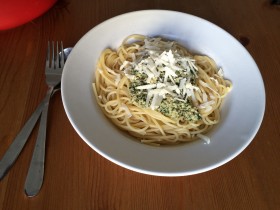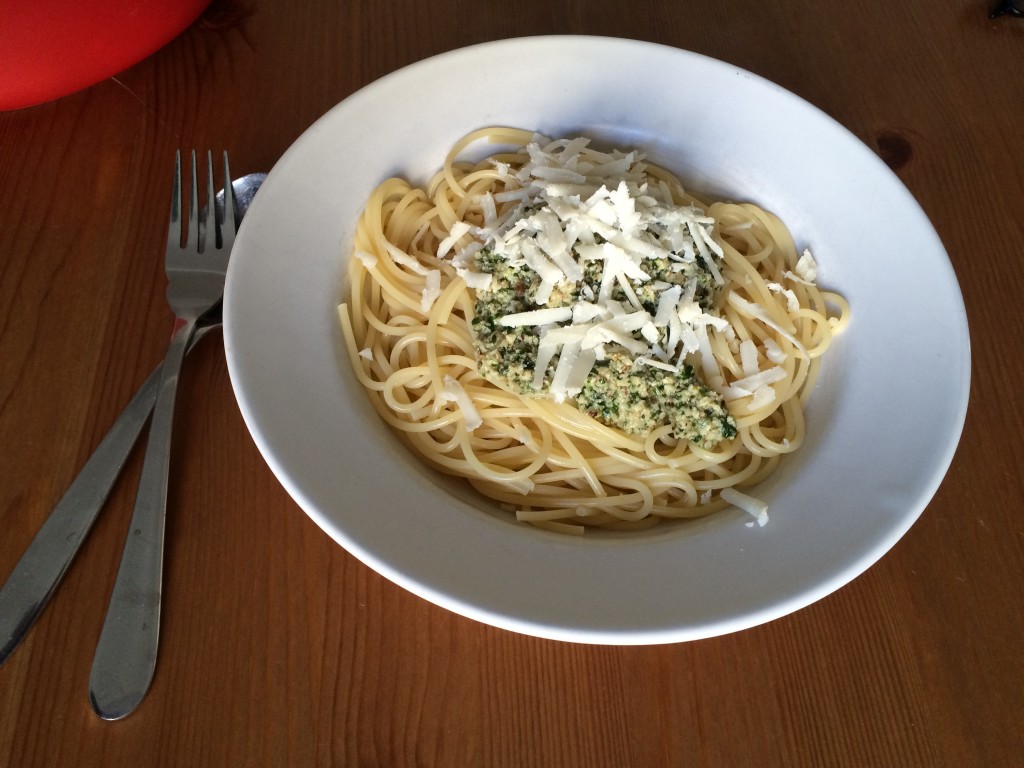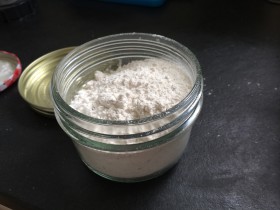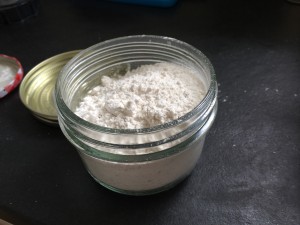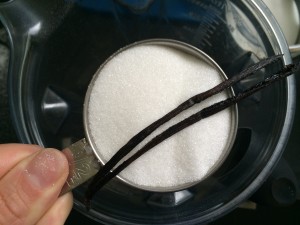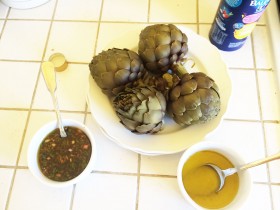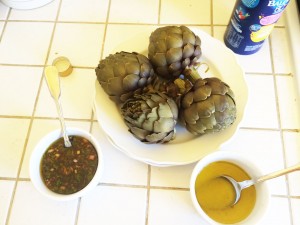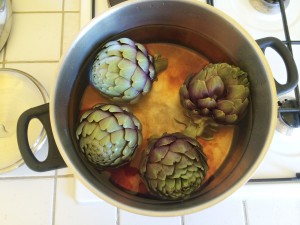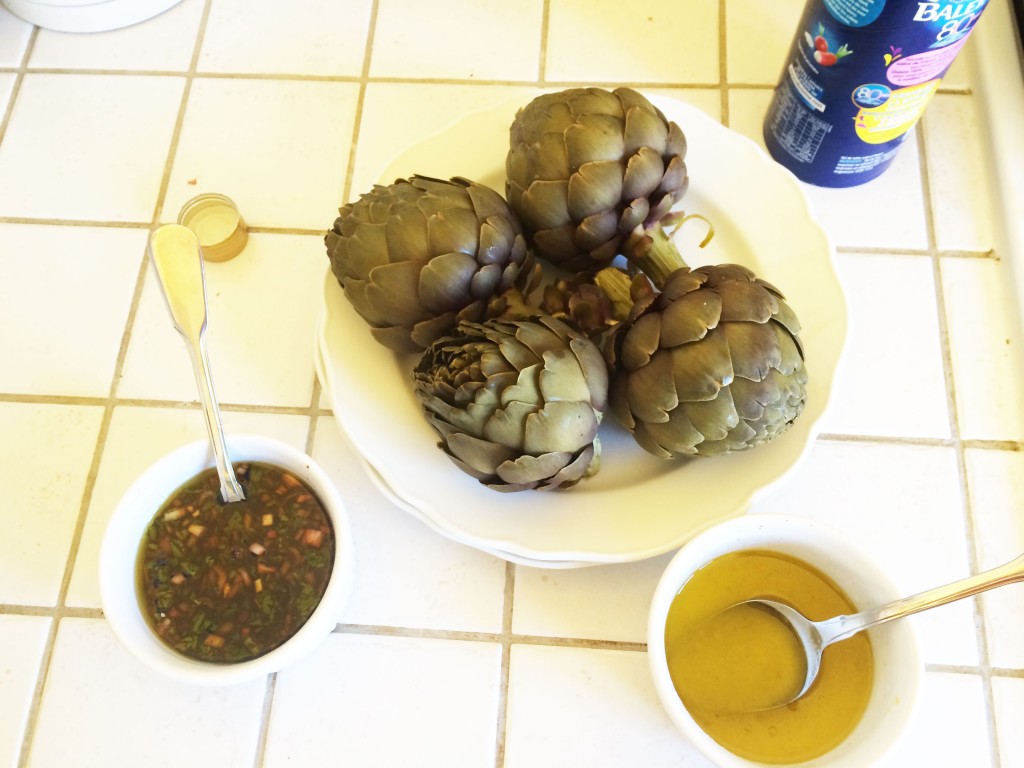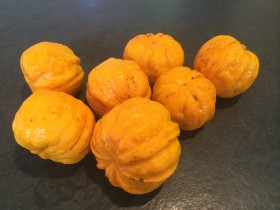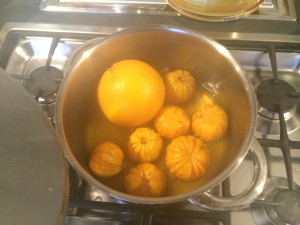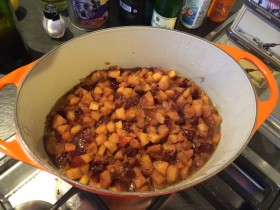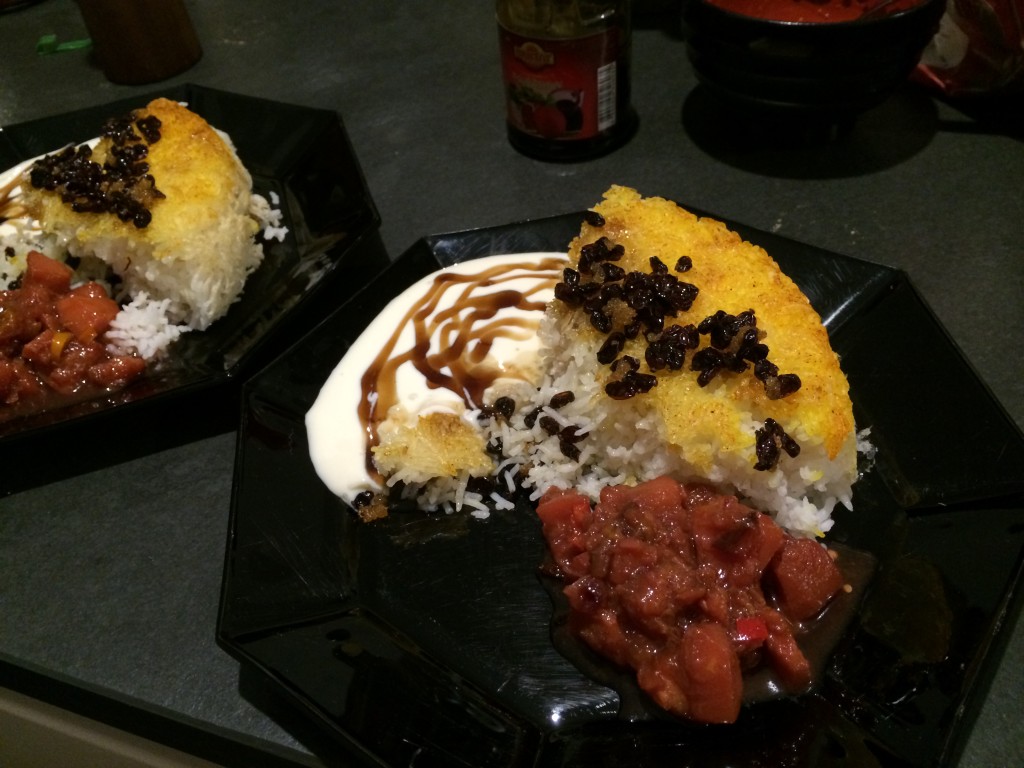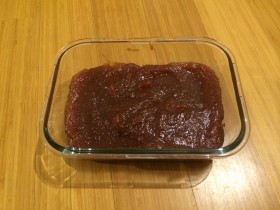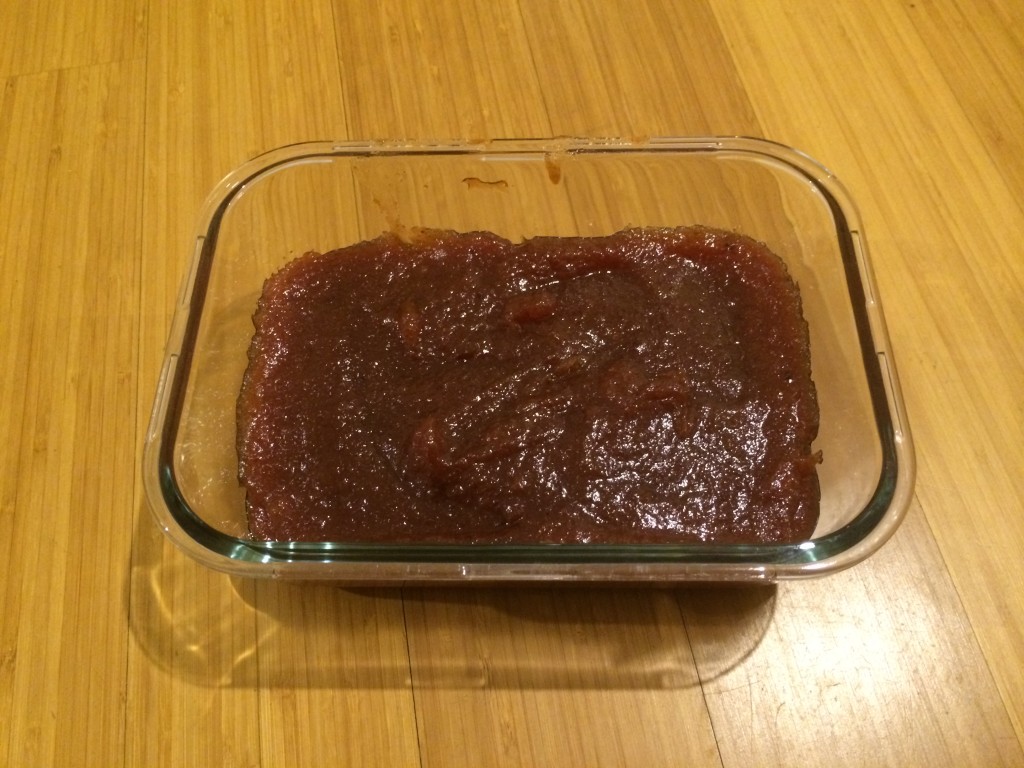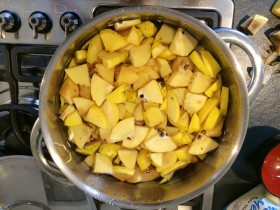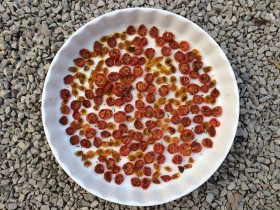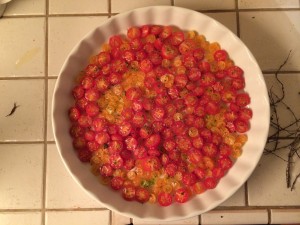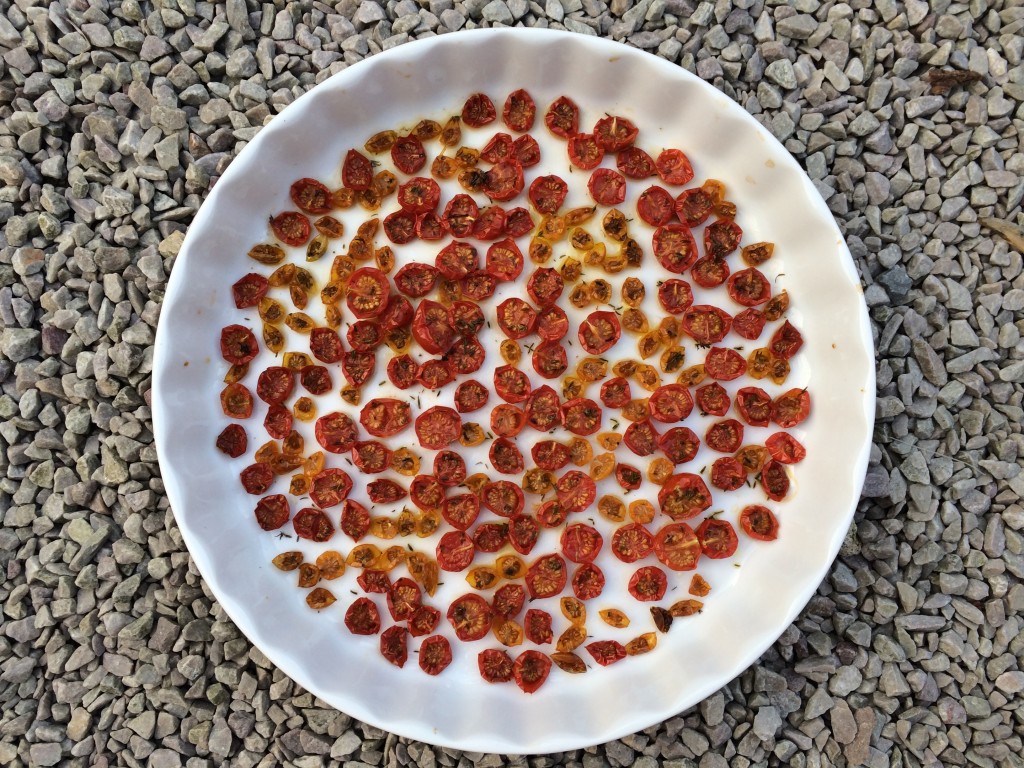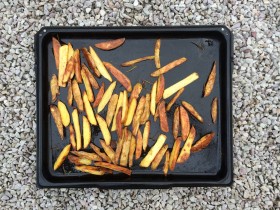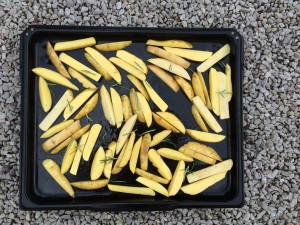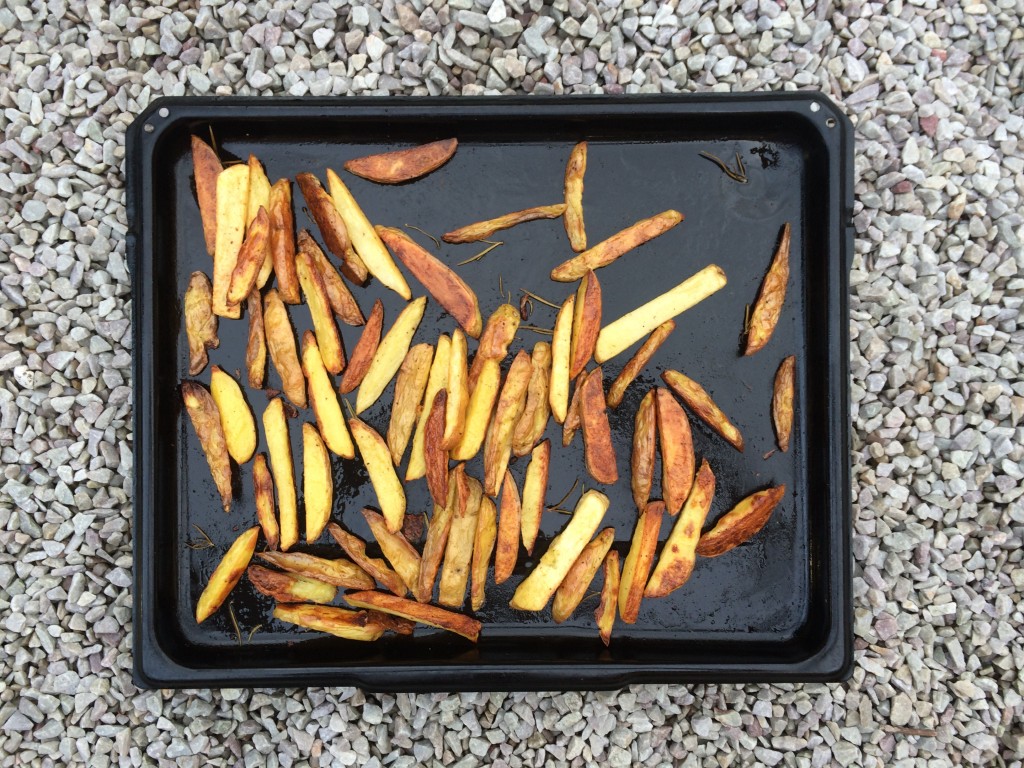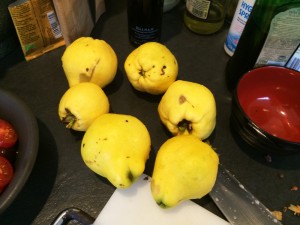
I love quince, they smell great, they look very nice, and they are one of the rare things you can only get, when they are in season.
This is why I am going to have a quince-special here on my blog!
One of the first things I did, when I got my garden, was to plant a quince tree. So my quince fruits are in season now, and I am having a hard time to use them fast enough, before they go off.
This is one minor problem wih quince, you always have to cook them, you can’t eat them raw.
First thing I do when the quince fruits are ripe, I cook quince jelly and with the remaining fruit pulp, I make quince cheese (dulce de membrillo). This is a natural pairing, because for the jelly you only need the juice and I could never bear it to throw away the complete fruit pieces, so I use them for the quince cheese.
Ingredients
- 5–6 quince fruits
- raspberries (optional)
- water
- jam sugar 2:1 (gelling sugar)
- lemon juice or citric acid
The exact amounts of water, sugar and the rest depend on the quantity of juice you get after cooking the quince, so I cannot give you more details in the ingredients list.
First you have to rub the fuzz off hte quince, I usually do this over the sink, simply by using my hands. But you can also use a kitchen towel. Then wash them thoroughly.
Now comes the heavx part: cut the quince fruits in about 2–2,5 cm pieces. Use the biggest, sharpest knife you can find in your kitchen, but please be careful with your fingers. The quince fruits are very hard, and you may need to use a lot of weight on the knife to cut then. Do not remove any pits or the skin. They help with the gelling process later.
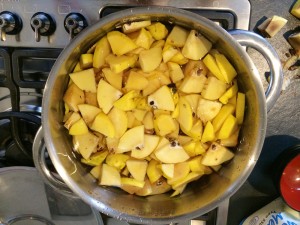 Put everythin in a big, non-reactive pot (stainless steel or enamel), cover with water and bring to a boil.
Put everythin in a big, non-reactive pot (stainless steel or enamel), cover with water and bring to a boil.
As soon as everything starts to boil, I reduce the heat to minimum and let them simmer for about 20 min. This should be enough to soften the quince and release their juices to the water.
To cook jelly, you usually need cold juice, so just leave the pot with everything on the stove to cool down and proceed the following day or whenever it is cool enough.
To start with the jelly strain the quince pieces through a fine mesh colander, but keep the juice, because this is, what we need first. Put the quince pieces in a plastic container in the fridge and leave it there until you got enough time to cook the quince cheese. Or maybe you already have other plans for them? They will keep for about one week.
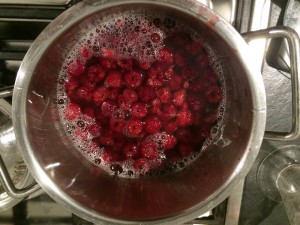 Measure your cold quince juice and put it in a non-reactive pot. If you want to use raspberries as well, weigh them and put them in the pot as well. For jelly you have to use a bit more than 50% of the weight of your juice, usually it is 700 ml juice and 500g jam sugar 2:1. Also add the amount you need for your raspberries.
Measure your cold quince juice and put it in a non-reactive pot. If you want to use raspberries as well, weigh them and put them in the pot as well. For jelly you have to use a bit more than 50% of the weight of your juice, usually it is 700 ml juice and 500g jam sugar 2:1. Also add the amount you need for your raspberries.
If you have a lemon at hand or some citric acid, you can add it too. I think, this is not necessary to taste better, but it keeps the colour fresh :-)
Mix very well with a wooden spoon and bring to a boil. As soon as it boils reduce to a simmer and let cook for a minimum of 4 minutes.
Prepare your glasses and fill with the jelly as soon as it is ready. Fill the glasses up to the rim, but make sure to keep the rim clean. Close the glasses and turn them bottom up, allow to stand for at least 10 minutes.
